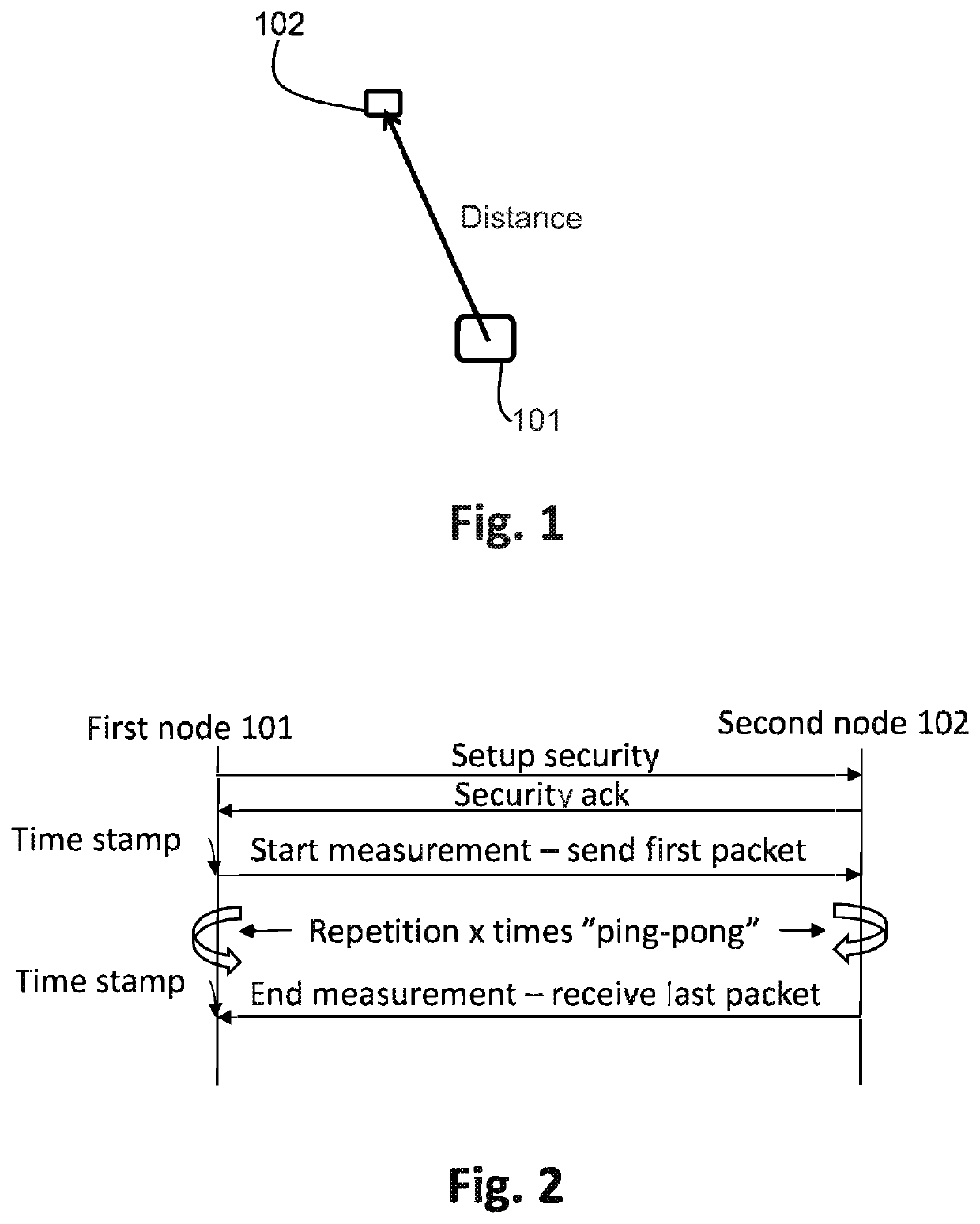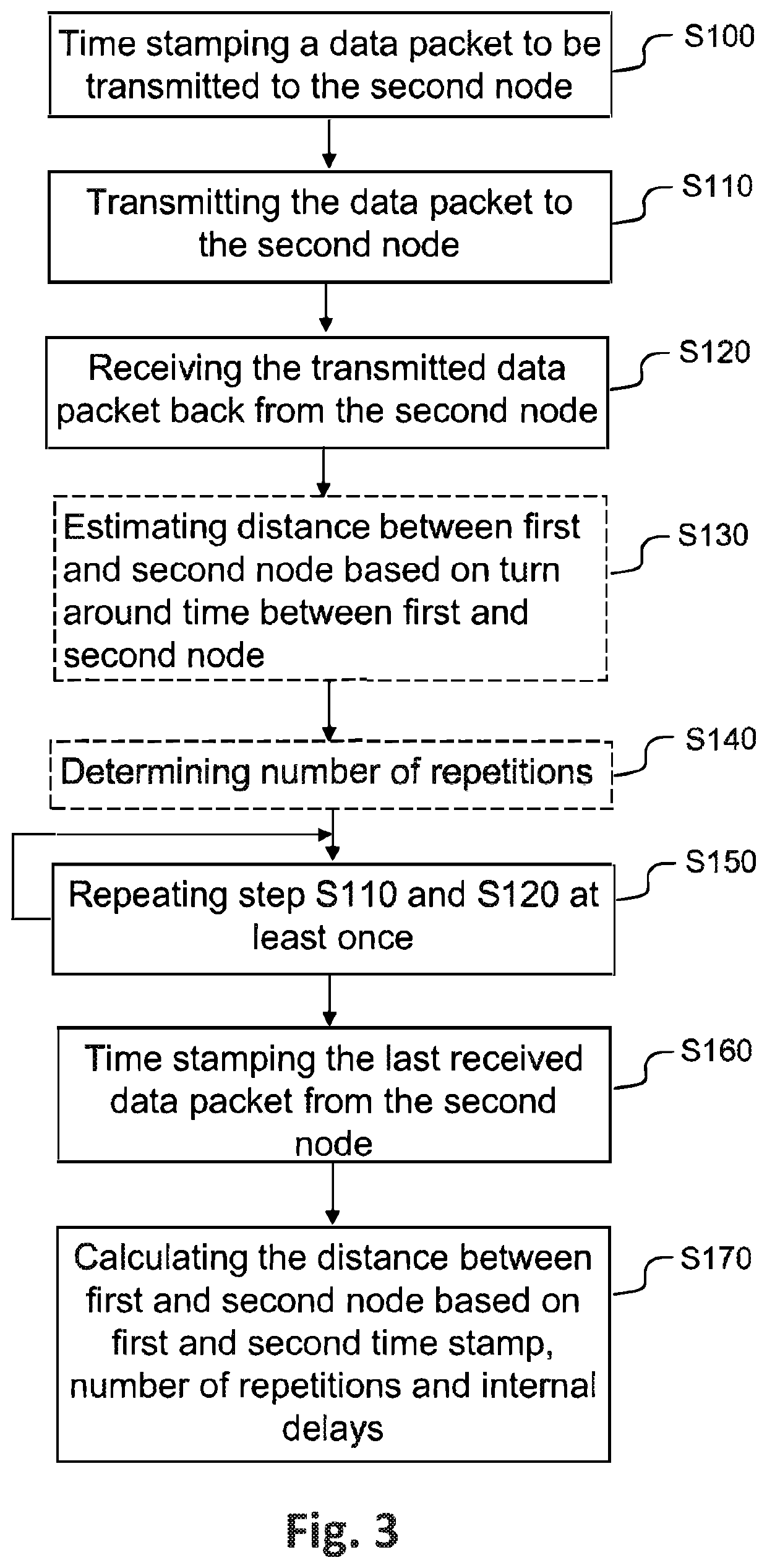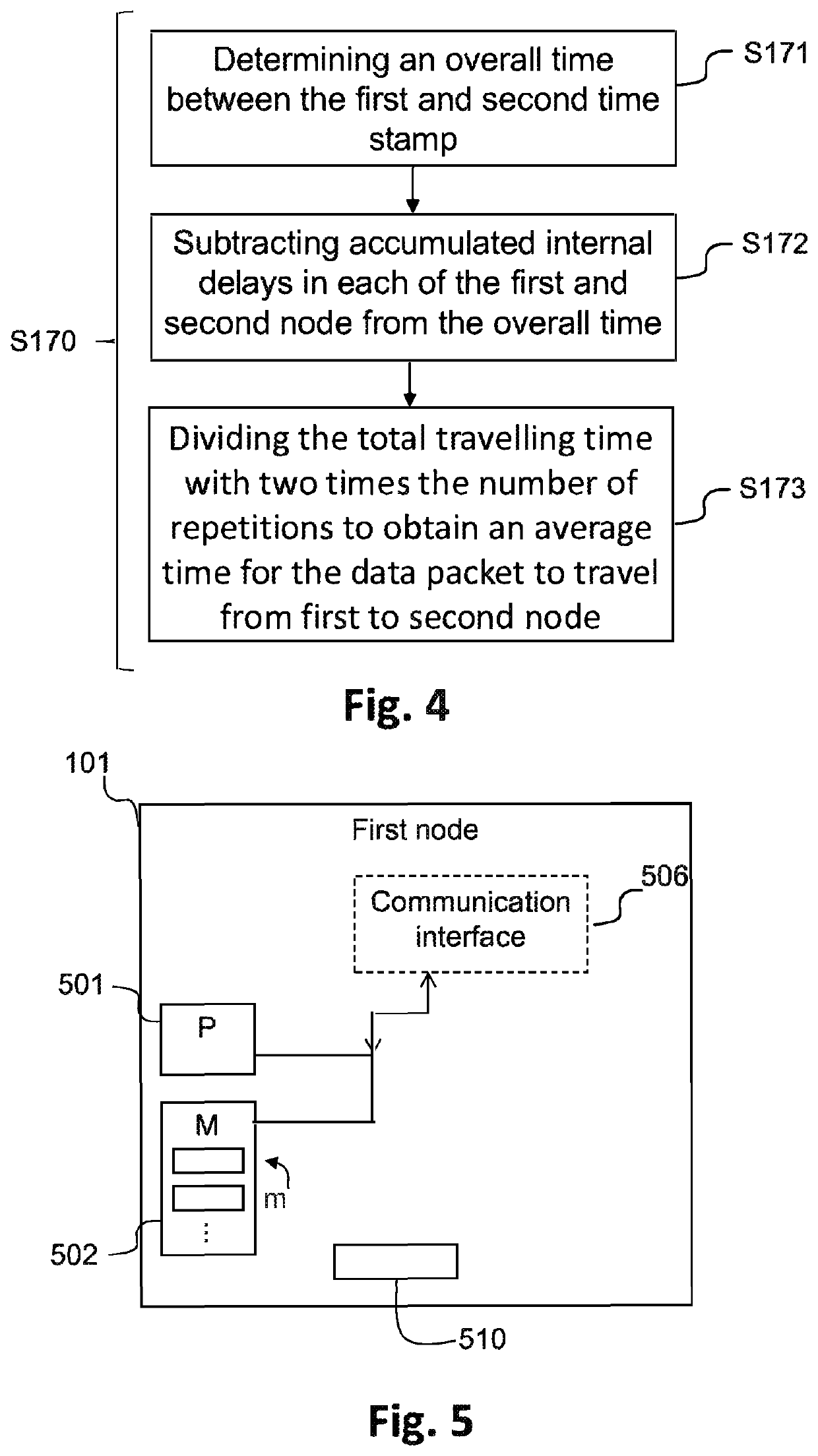Method for determining a distance between two nodes
a distance measurement and positioning solution technology, applied in the field of distance measurement and positioning solution enhancement, can solve the problems of large errors in a distance calculation, difficult to accurately measure the time of flight, time difference of arrival, etc., and achieve the effect of accurate time stamping and accurate time stamping
- Summary
- Abstract
- Description
- Claims
- Application Information
AI Technical Summary
Benefits of technology
Problems solved by technology
Method used
Image
Examples
Embodiment Construction
[0029]In the following, a detailed description of the method performed by a first node for determining a distance between the first and a second node will be made.
[0030]FIG. 1 is a general view of a scenario showing the first node 101 and the second node 102. It is the distance between these two nodes 101, 102 that is to be determined. The first node 101 may for example be a User Equipment, UE such as a mobile phone, smart phone, PDA, tablet, PC, laptop or similar or it can be a dedicated locator device used for locating and determining the distance to a second node 102. An exemplary first node 101 will be described closer in conjunction with FIG. 5. The second node 102 may also be a UE as the first node 101, but could also be a more passive device comprising a radio frequency transceiver. At some time, a user wants to determine the distance to or locate the second node 102. Examples of such an occasion can be, without limitation, when the object has been stolen, lost, or when a per...
PUM
 Login to View More
Login to View More Abstract
Description
Claims
Application Information
 Login to View More
Login to View More - R&D
- Intellectual Property
- Life Sciences
- Materials
- Tech Scout
- Unparalleled Data Quality
- Higher Quality Content
- 60% Fewer Hallucinations
Browse by: Latest US Patents, China's latest patents, Technical Efficacy Thesaurus, Application Domain, Technology Topic, Popular Technical Reports.
© 2025 PatSnap. All rights reserved.Legal|Privacy policy|Modern Slavery Act Transparency Statement|Sitemap|About US| Contact US: help@patsnap.com



